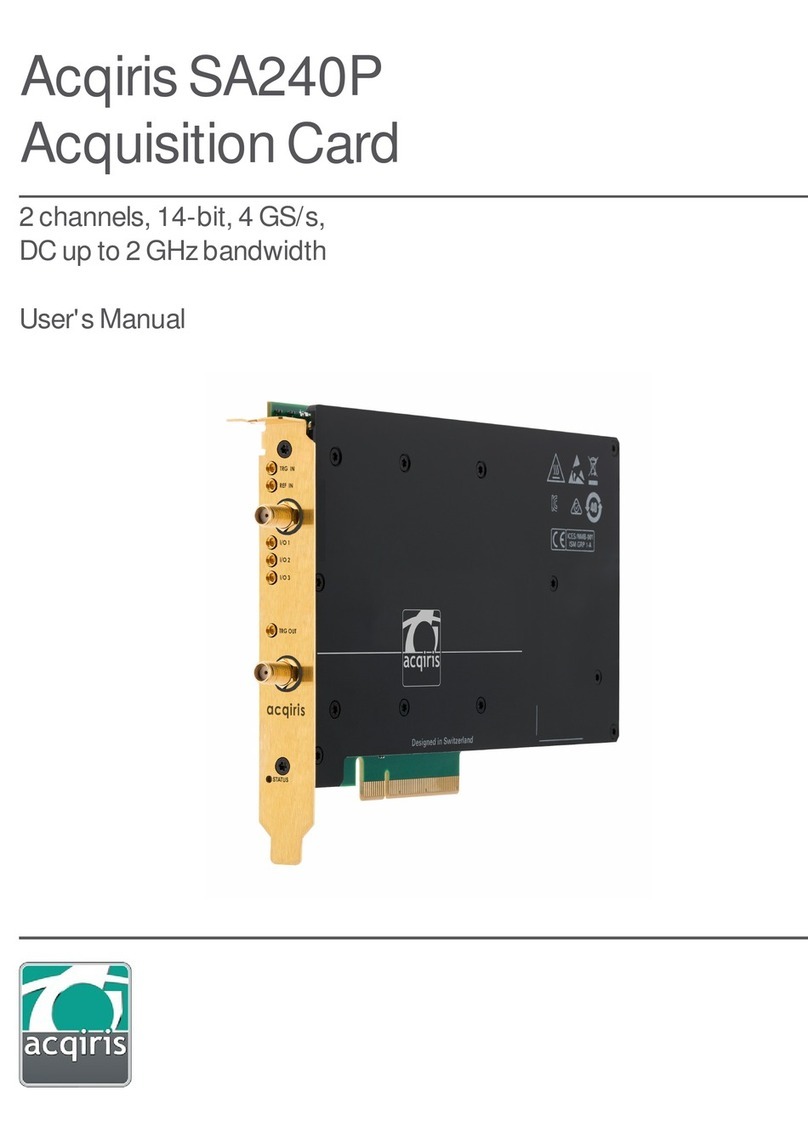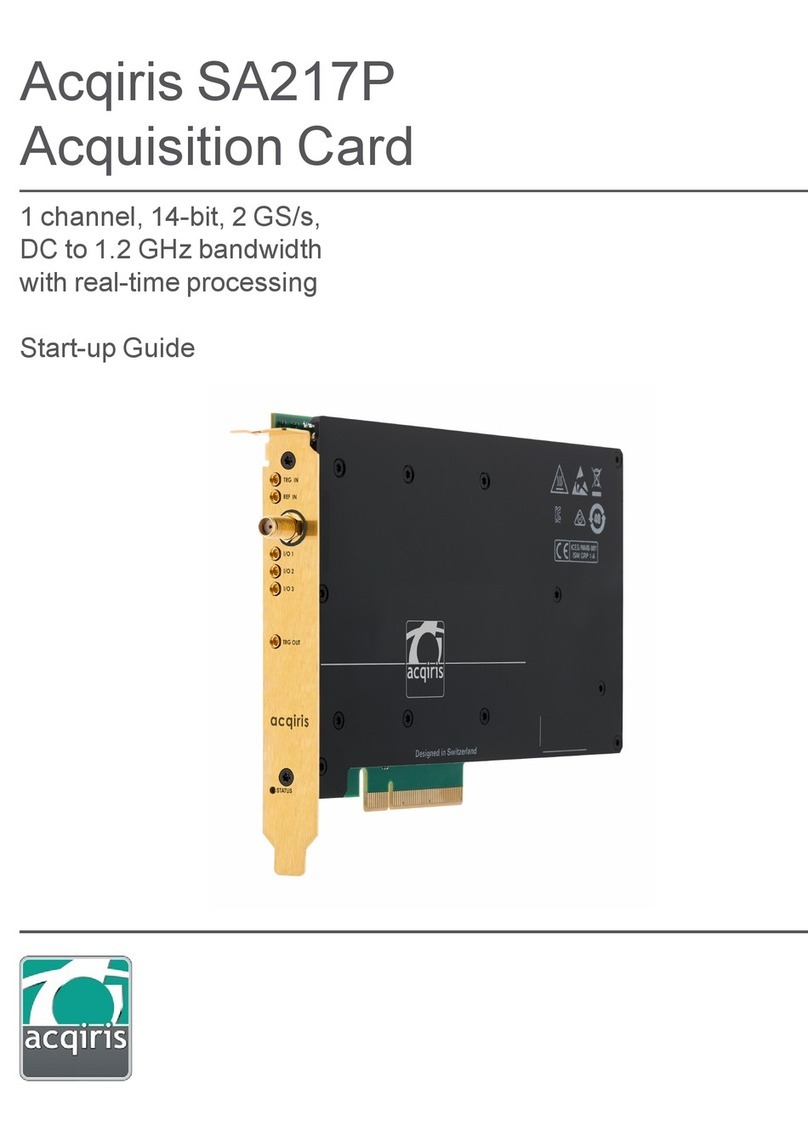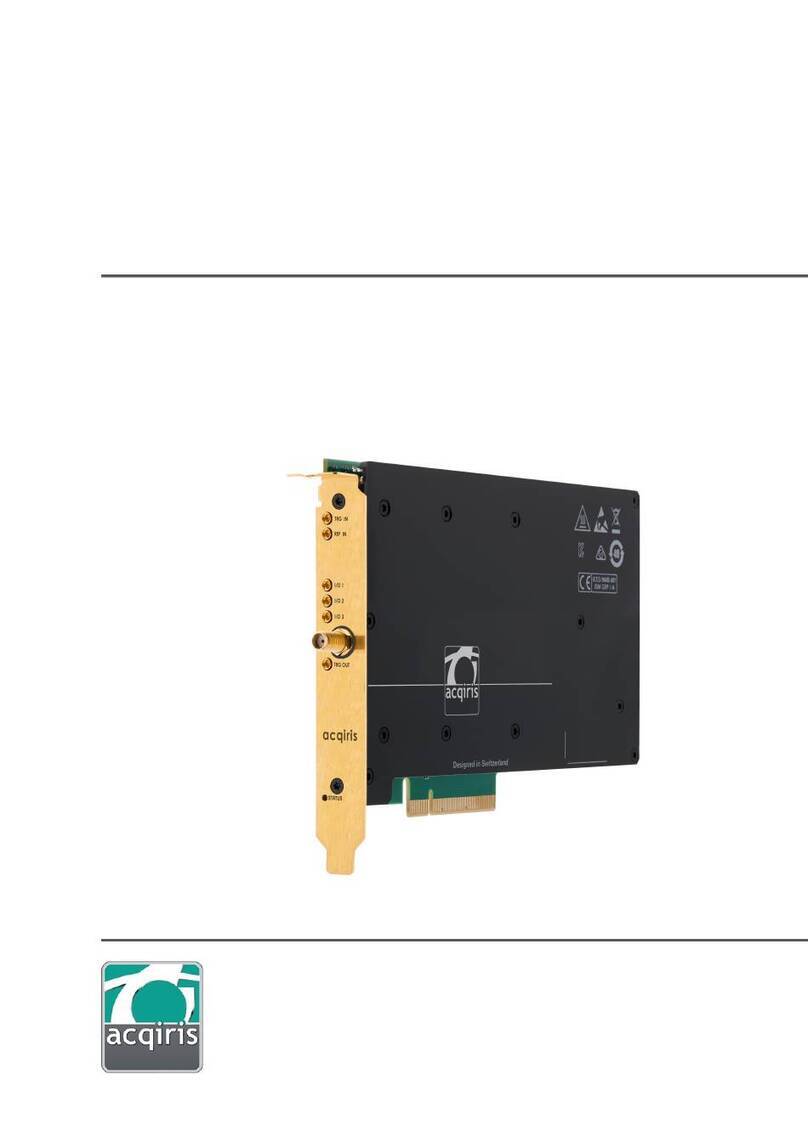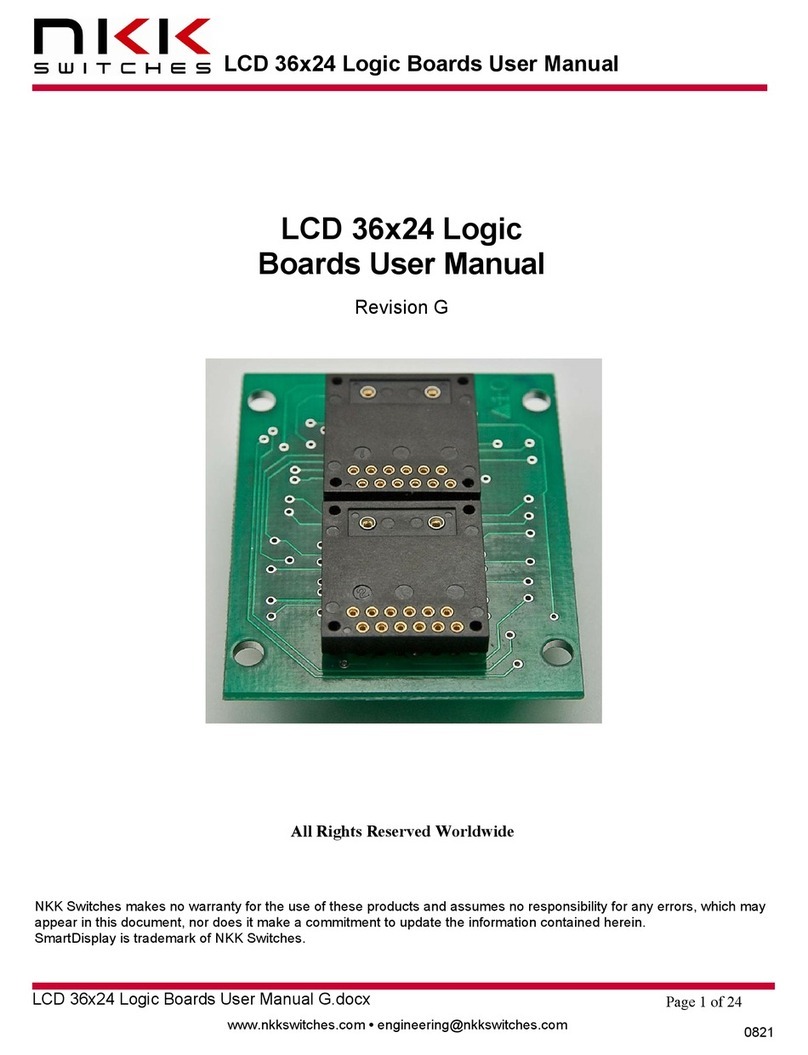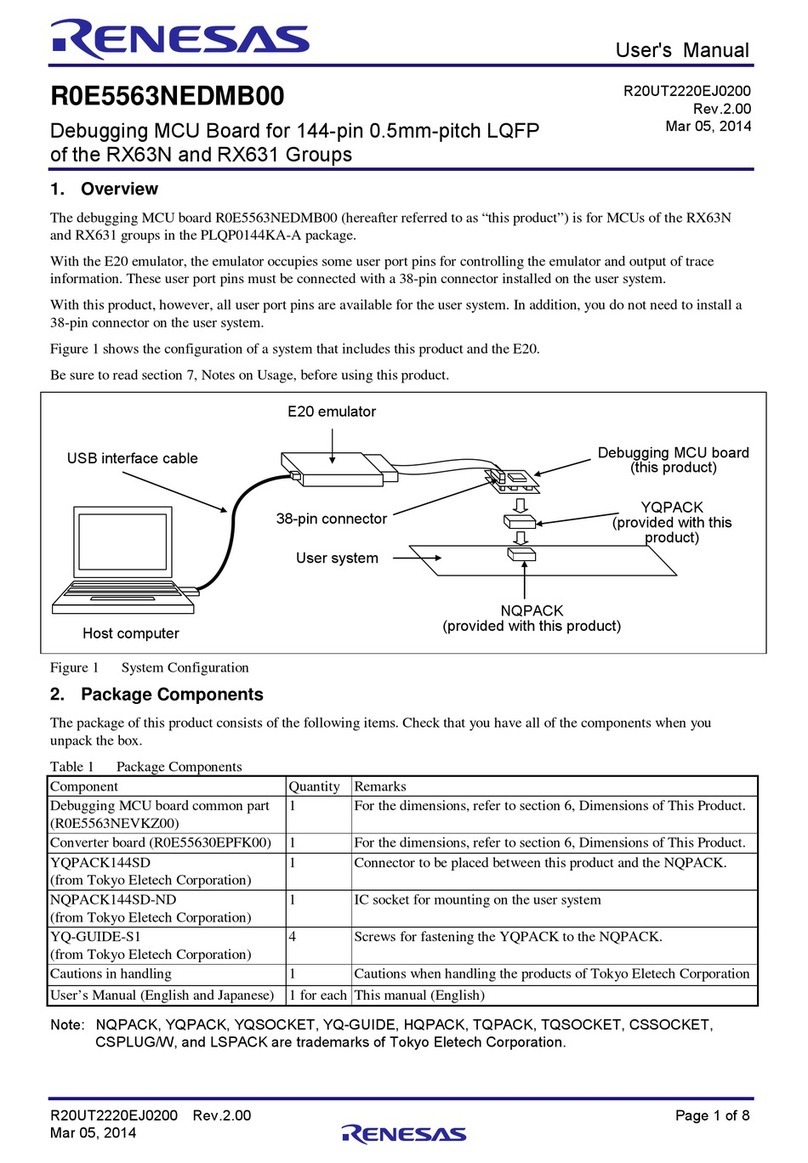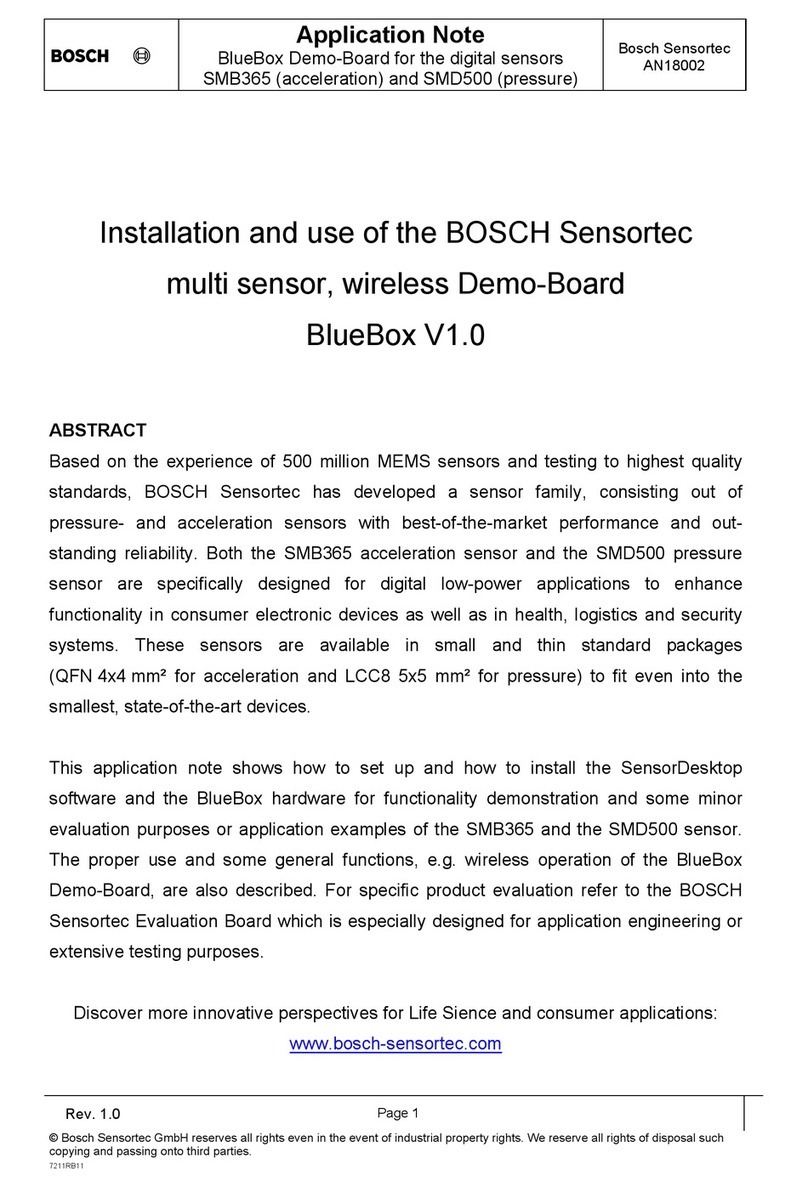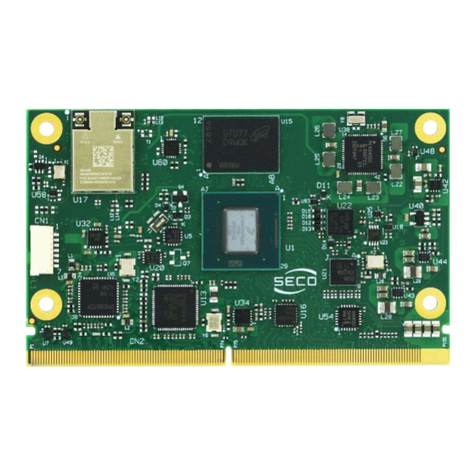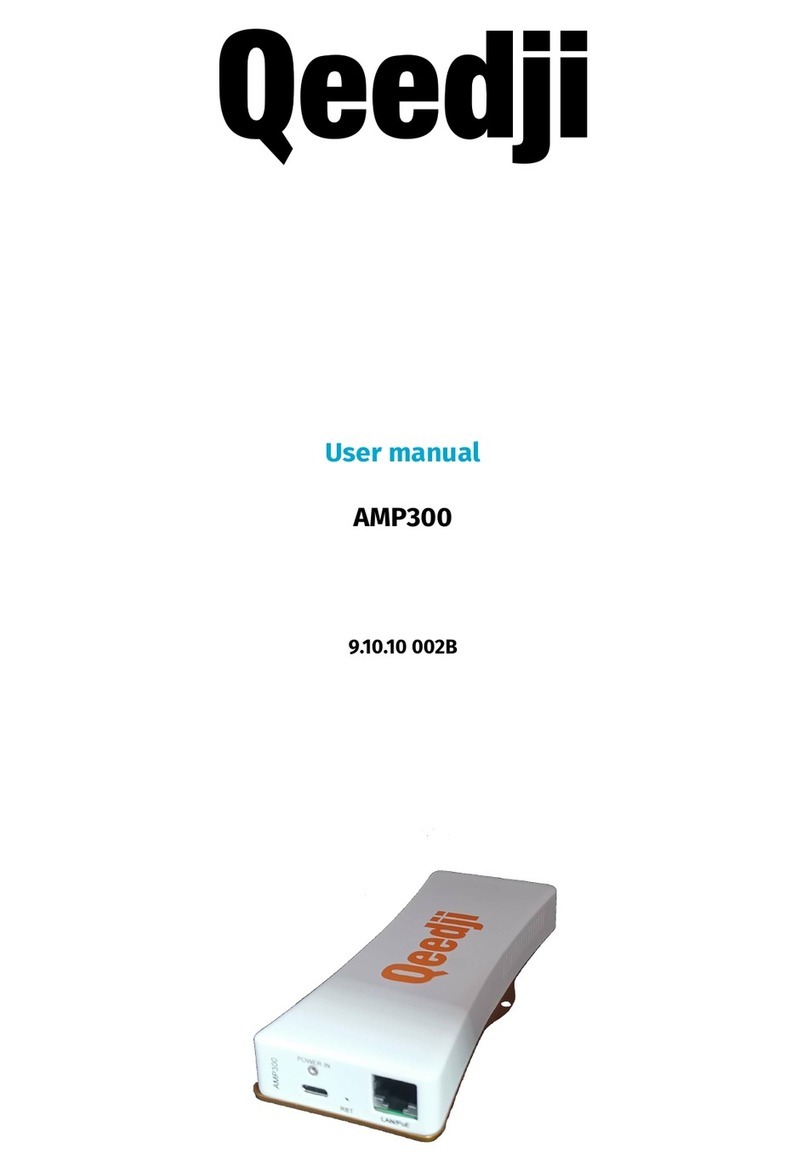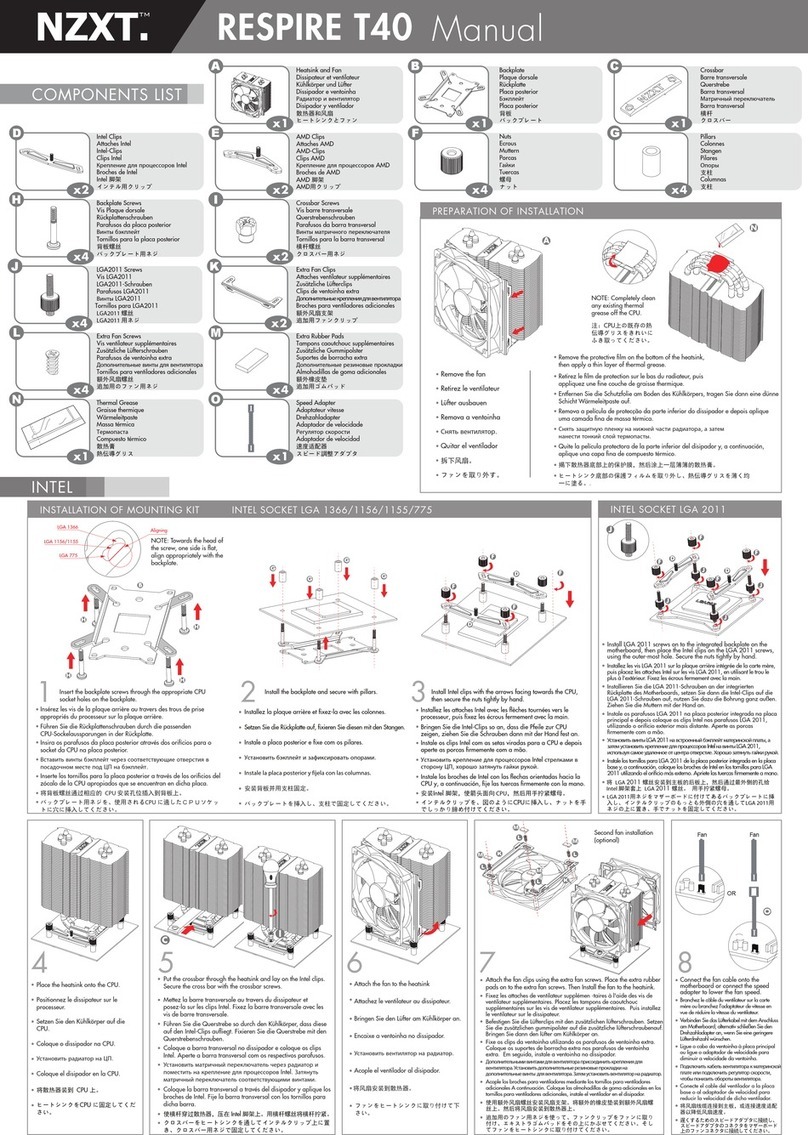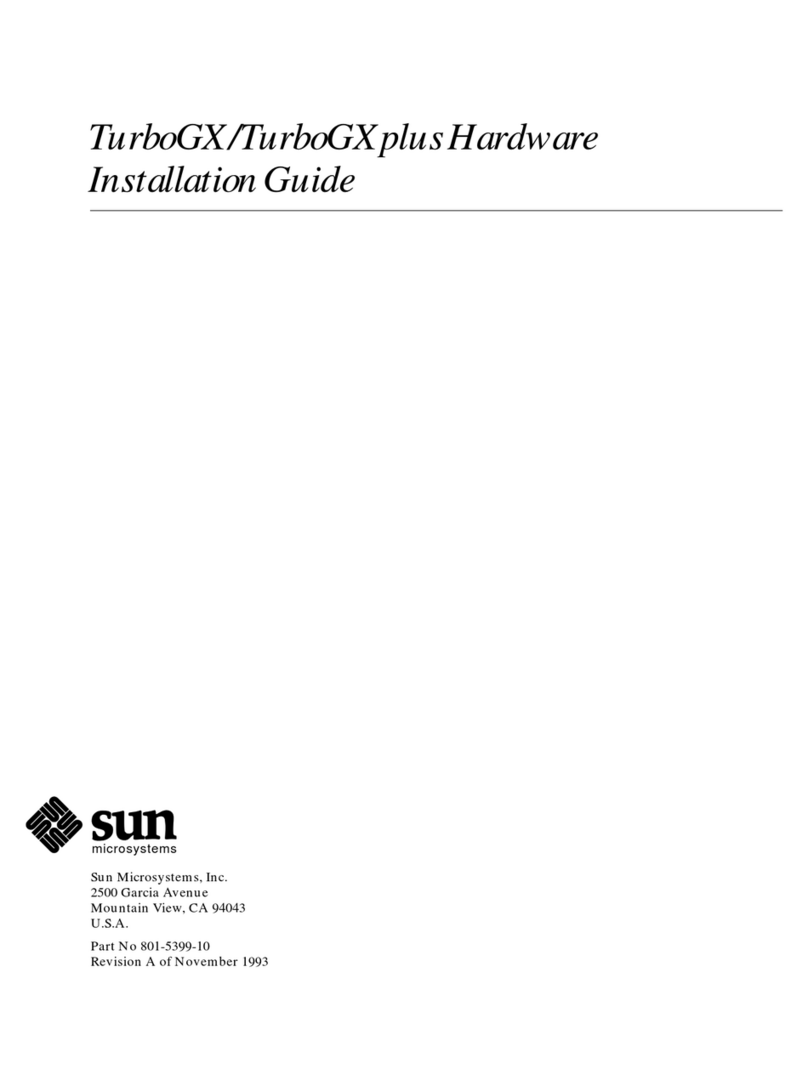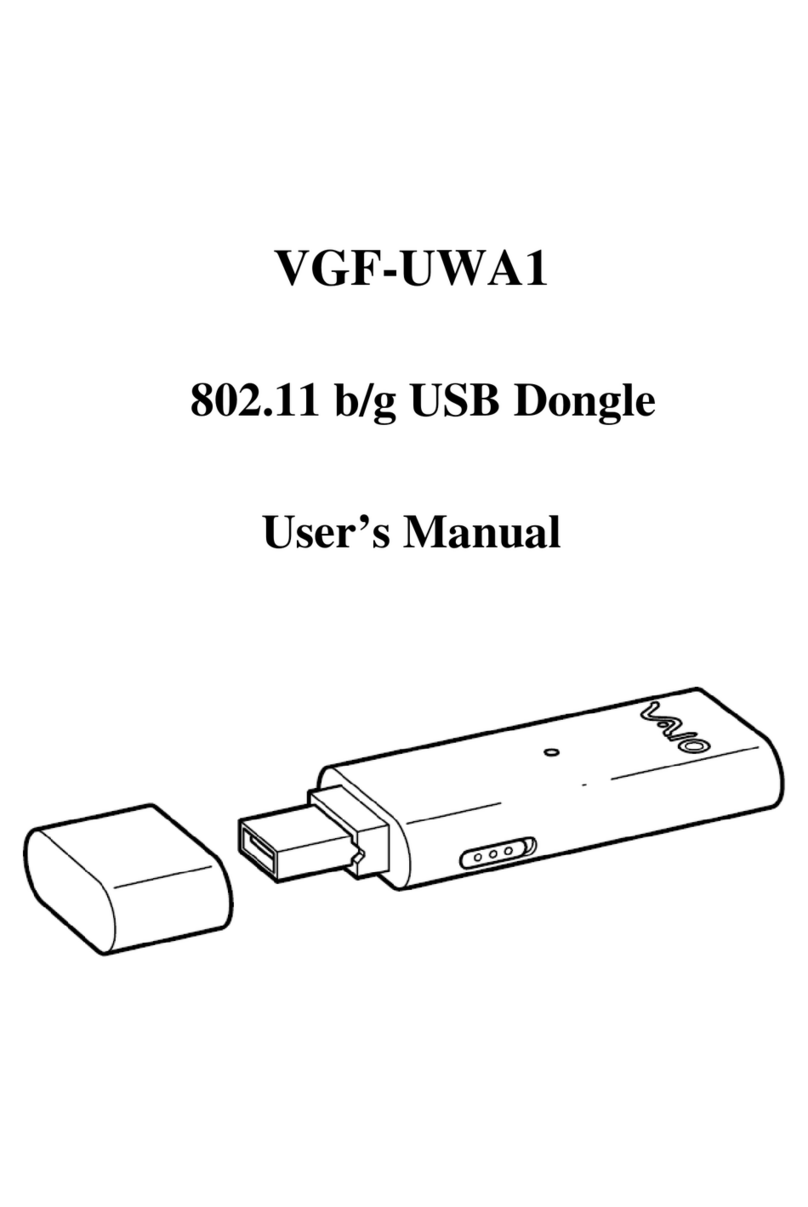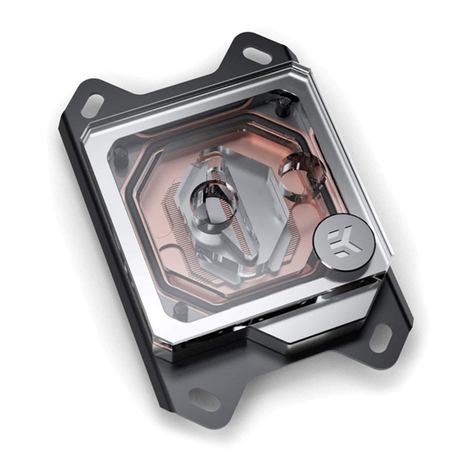Acqiris SA220P User manual

AcqirisSA220P
AcquisitionCard
2channels,14-bit,1GS/sor2GS/s,
DCupto1.2GHzbandwidth
User'sManual

2 Acqiris SA220P User's Manual
Copyright Statement
© Acqiris, 2018 - 2020
No part of this manual may be reproduced in any form or by any means (including electronic storage
and retrieval or translation into a foreign language) without prior agreement and written consent from
Acqiris SA as governed by international copyright laws.
Version
June 2021
Contact us
Acqiris Americas
Acqiris Europe
Acqiris Asia-Pacific
Acqiris Japan
Worldwide contact for support
Acqiris SA
Chemin des Aulx, 12
1228 Plan-Les-Ouates
Switzerland
www.acqiris.com

SA220P Acquisition Card User's Manual
Acqiris SA220P User's Manual 3
SA220PAcquisitionCardUser'sManual
This help document is intended to provide in-depth information and reference material specific to
your ADC card.
For information about installation and about getting started with your ADC card, please refer to the
Startup Guide which can be downloaded from https://extranet.acqiris.com/ or which is installed with
your software.
Content
SA220P Acquisition Card User's Manual 3
Content 3
Introduction 5
New generation of Signal Acquisition Cards 5
Product description 5
Product configurable options 7
Main Card Features 8
1.1 SA220P front panel features 9
1.2 Channel input specifications 10
1.3 Sampling and data acquisition 12
1.4 Calibration 13
1.5 Trigger 15
Signal Acquisition Modes and Real-Time Processing 17
2.1 Digitizer acquisition mode 18
2.2 Real-time averaging mode (AVG option) 22
Readout Modes 29
3.1 Standard readout modes 29
3.2 Simultaneous acquisition and readout (CST option) 30
3.3 Averager with simultaneous acquisition and readout (AVG & CST) 41
Other Signal Processing Features 44
4.1 Baseline stabilization and digital offset 45
4.2 Sampling rate reduction (binary decimation) 48
4.3 Data inversion 49
4.4 Thresholding (Zero-Suppress - ZS1 option) 50
Control and Synchronization 61
5.1 External reference 62
5.2 Trigger modes and time-stamps 62
5.3 Trigger output 67

Content
4 Acqiris SA220P User's Manual
5.4 Multi-purpose inputs and outputs 69
Programming Information 71
6.1 Overview of the AqMD3 Driver 71
6.2 Programming with the IVI-C Driver in various development environments 72
6.3 Migrating from MD2 2.x to MD3 3.x 74
6.4 Initial configuration 75
6.5 Apply setup 76
How To ... ? 77
7.1 How to discover the PXI Instrument? 78
7.2 How to calibrate the card? 79
7.3 How to configure and read data on two channels? 81
7.4 How to access repeated capabilities? 82
7.5 How to generate a software trigger? 83
7.6 How to enable or bypass the bandwidth limiter? 84
7.7 How to set the external trigger? 85
7.8 How to perform binary decimation? (depending on firmware) 86
Software utilities 87
8.1 ADC card Verification Utility (AqMD3Verify) 87
FAQ 89
9.1 Q. What is coherent sampling? 89
9.2 Q. How to manage the internal temperature? 89
9.3 Q. What happens if the host processor goes in hibernation mode? 90
General information 91
10.1 Safety notes 91
10.2 Cleaning precautions 93
10.3 Product markings 93
10.4 Electrical &environmental specifications 94
10.5 Related documentation 94

Introduction
Acqiris SA220P User's Manual 5
Introduction
New generation of Signal Acquisition Cards
The Acqiris SA2 is a high-performance 14-bit ADC card platform, performing signal acquisitions
from 1GS/s up to 10GS/s, with excellent signal fidelity across a wide bandwidth. This new card and
module generation with advanced real-time processing capabilities is designed for embedded OEM
applications in a variety of challenging measurements, imaging and processing systems.
Product description
The SA220P ADC card is the 2 GS/s or 1 GS/s, dual channel version of the SA2 product family. This
unique DC-coupled 14-bit digitizer captures waveforms from DC up to 1.2 GHz.

Product description
6 Acqiris SA220P User's Manual
Featuring very long acquisition memory up to 8 GB, the SA220P includes a powerful Xilinx Kintex
UltraScale FPGA offering real-time signal processing capability such as waveform averaging or
peak listing. The PCIe Gen 3 interface enables high data transfer rate and streaming capabilities to
the host computer at up to 6.5 GB/s. This ADC card occupies a single PCIe slot, offering high
performance in a small footprint.
All the ADC cards and modules from the SA2 family implement a proprietary low noise front-end.
With undisputed spurious-free dynamic range (SFDR) and signal noise ratio (SNR) performances in
high frequencies, it is ideal for OEM applications requiring digitizer sampling at wide bandwidth and
very high dynamic range, especially at 500 mV full scale range (FSR). Moreover, optimized
response allows few hundred picoseconds pulse analysis. Overall performance enables final
products to measure deeper, faster and more precisely.
Figure 1.1 - SA220P block diagram

Product configurable options
Acqiris SA220P User's Manual 7
Most of the technical specifications concerning your particular ADC card are covered in this manual,
however for the complete specifications please refer to the SA220P datasheet.
Product configurableoptions
The SA220P comes with several options:
Sampling rate version:
2 GS/s (default)
1 GS/s (-LSR option)
Additional memory:
4 GB (MEA option)
8 GB (MEB option)
ADC Card modes:
Digitizer mode (DGT)
Real-time averaging (AVG option)
Optional features:
Simultaneous acquisition and readout - Streaming records (CST option)
Zero Supress - Thresholding (ZS1 option)
Custom firmware capability (CFW option)
Dedicated application option:
Configuration and firmware for Swept-source OCT (SS4 option)
Other internal references:
I/O ports for SA220P: 3 I/Os, 2 analog outputs, 1 trigger output (EXA)
Limited bandwidth - for 1 GS/s version (LBW)

1.1 SA220P front panel features
Acqiris SA220P User's Manual 9
1.1 SA220P front panel features
Front panel connectors
Connector Type Description
TRG IN MMCX
female External trigger input, 50 Ω DC terminated, ± 5 V range.
IN 1, 2
SMA
female
Analog signal inputs, DC-coupled and 50 Ω terminated. The input full scale
ranges are selectable:
Voltage 500 mV FSR 2.5 V FSR
Recommended maximum
operating voltage ± 600 mVpk ±3 Vpk
TRGOUT1
MMCX Trigger Out signal (programmable).
50Ω source, LVCMOS 3.3V
I/O 1, 2, 3
MMCX
User configurable digital Input / Output signal.
DC coupling, LVCMOS 3.3 V.
Output: 50Ω source, Input: +5V max.
REF IN MMCX External reference clock input, AC coupled and 50 Ω terminated.
It can accept a 10MHz or a 100 MHz signal from -3 to +3 dBm.
AN OUT 1, 2
MMCX
Application dependent analog signal from a 12-bitDAC, controlled by the
internal FPGA.
DC coupling, 300 Ω source, programmable output up to ± 10V.
Table 1.1 - List of SA220P front-panel IOs.
The ADC card can usually work with signal present at the external reference input (REF IN).
However, to ensure the best performance, or if the calibration is found to be unreliable, it is
recommended to remove such signals when working with internal clock.
1The trigger out connector depends on the product version.

1.2 Channel input specifications
10 Acqiris SA220P User's Manual
1.2 Channel input specifications
This section provides information and specifications regarding the input characteristics of the ADC
card.
The SA220P provides two 14-bit DC-coupled channels at the sampling rate of up to 2 GS/s.
Channel input
The SA220P has the following front end capabilities:
Coupling / Impedance Full Scale Ranges (FSR) Maximum operating voltage Input voltage offset
DC / 50 Ω
500 mV ± 600 mVpk ± FSR/2
2.5 V ± 3 Vpk ± FSR/2
Table 1.2 - Channel input specifications.
Impedance & coupling
The input channel termination is 50Ω. The input coupling is DC.
Input protection
The input amplifiers are designed to accept signals within the absolute maximum operating voltages
shown in the table.
Bandwidth and rise time
The bandwidth specification indicates the frequency at which an input signal will be attenuated by
3dB (approximately 30% loss of amplitude).
The bandwidth of the SA220P is from DC to 1.2 GHz (typical) with a sampling rate of 2 GS/s.
The 1 GS/s version (LSR/LBW options) has a bandwidth from DC to 475 MHz (typical).
The bandwidth also has an impact on the minimum rise and fall times that can be passed through
the front-end electronics. A pulse with a very sharp edge will be observed to have a minimum rise
time Tmin determined by the front-end electronics. In general a pulse with a given 10-90% rise time
T10-90real will be observed with a lower value given by:
T10-902=T10-90real2+Tmin2
where Tmin(ns) ≈ 0.35/BW(GHz).

1.2 Channel input specifications
Acqiris SA220P User's Manual 11
Bandwidth limitation
SA220P ADC cards offer a bandwidth limiter capability at 20 MHz, 200 MHz or 700 MHz.
Also see Programing section > How to enable or bypass the bandwidth limiter? (page 84).
Vertical resolution
The SA220P uses 14-bit ADCs giving 16384 levels at each input full scale range i.e. 16384 level of
~152 μV average width when using the 2.5 V FSR, or 30 μV using the 500 mV FSR. See Acquired
data format (page 20) for more details.

1.3 Sampling and data acquisition
12 Acqiris SA220P User's Manual
1.3 Sampling and dataacquisition
The ADC card acquires waveforms in association with triggers. Each waveform is made of a series
of measured voltage values (sample points) coming from the ADC at a uniform sampling rate.
Sampling rate
The SA220P acquisition card contains an analog-to-digital conversion (ADC) system that can
sample waveforms, in a real time sampling mode, at the maximum rates shown in the table below.
Model Max. Sampling
Rate
Available
Channels Resolution Acquisition Modes
SA220P
2 GS/s
(default), or 1
GS/s (-LSR)1
2 14 bits
Single or multi-record
(up to 131'072 records)
or continuous steaming with CST option.
Table 1.3 - Acquisition sampling rate and resolution per channel.
Data acquisition modes and functions
The SA220P ADC card supports several acquisition modes and optional functions for real-time
signal processing in FPGA. You can refer to the corresponding section for details.
ADC card modes:
Digitizer acquisition mode (page 18)
Real-time averaging mode (AVG option) (page 22)
Available signal processing features:
Sampling rate reduction (binary decimation) (page 48)
Baseline stabilization and digital offset (page 45)
Data inversion (page 49)
Thresholding (Zero-Suppress - ZS1 option) (page 50)
Read out modes:
One shot with single waveform
One shot with multiple waveforms
Simultaneous acquisition and readout (CST option) (page 30)
Dedicated application:
SS-OCT configuration and firmware (SS4 product version) (For details refer to SS-OCT
manual)
1Depending on your product version.

1.4 Calibration
Acqiris SA220P User's Manual 13
1.4 Calibration
The SA220P is factory calibrated and shipped with a calibration certificate.
The internal calibration refers to the adjustment of ADC card internal parameters, corresponding to
user selected parameters and required before starting acquisition.
Internal calibration
The internal calibration (or self-calibration) measures and adjusts the internal timing, gain and offset
parameters between the ADCs and against a precise reference.
The ADC card includes a high precision voltage source and a 16-bit DAC, used to perform the input
voltage and offset calibration.
The supplied software drivers include self-calibration function which can be executed upon user
request. The ADC cards are never self-calibrated in an automatic way, (i.e. as a consequence of
another operation). This ensures programmers have full control of all calibration operations
performed through software in order to maintain proper event synchronization within automated test
applications.
For accurate time and voltage measurements it is recommended to perform a self-calibration
once the module has attained a stable operating temperature (usually reached after 20 minutes of
ADC card operation after power on).
A full internal calibration of a ADC card can be time consuming because of the many possible
configuration states. Therefore, the self-calibration is performed only for the current configuration
state, and is mandatory before making the first acquisition with given settings. Indeed the AqMD3
driver prevents an acquisition from being performed unless a self-calibration has first been
completed. Note that some configuration changes do not require a new self-calibration. To avoid
unnecessary self-calibrations, the IAqMD3Calibration.IsRequired IVI.NETproperty or the
AQMD3_ATTR_CALIBRATION_IS_REQUIRED IVI-C attribute should be queried.
ADC card can usually work with signals present at the channel input, or trigger input. However, to
ensure the best performance, or if the calibration is found to be unreliable (as shown by a
calibration failure status), it is recommended to remove such signals.
Similarly, when working with internal clock, it is recommended to remove external reference input
during calibration to avoid parasitic effects.
It is not recommended to perform multiple successive calibrations. If a recurrent calibration failure
occurs, in case of specific application, please contact support for advice.
Switching from one operational modes to another one (e.g. from Averager mode to Zero-
Suppress mode) does not need to recalibrate the card.

1.4 Calibration
14 Acqiris SA220P User's Manual
Smart-calibration
The smart calibration implemented in MD3 drivers allows to save time by automatically keeping in
memory the calibration information from any self-calibration performed since the beginning of the
session. When the acquisition parameters are changed, no re-calibration of the card is necessary if
a self-calibration has already been performed with the same acquisition conditions (i.e. the same set
of parameters), unless the clock mode parameters are changed.
Indeed, any change in the clock mode parameters (i.e. External clock frequency or Reference
mode parameters), induces a restart of the clocks which requires a new self-calibration.
For details, see Parameter change requiring a new self calibration (page 79).
Factory calibration
Factory calibration is the process of measuring the actual performance of a device-under-test (DUT)
using laboratory instruments that have significantly better performance than the DUT. Laboratory
instrument performance must be traceable to the International System (SI) Units via a national
metrology institute (NIST, NPL, NRC, PTB, CENAM, INMETRO, BIPM, etc.)
The measured performance is then compared to published datasheet specifications. For each
factory calibration, Acqiris tests the performance corresponding to all datasheet specifications, for
every installed option. If needed, the DUT is adjusted and re-qualified ; ensuring it is in line with full
specifications.
Our ADC cards are calibrated at factory during the production phase. There is no need to
systematically calibrate each year.
Firstly, the cards include a self-calibration function providing a good degree of confidence that your
card is operating within its specifications on a day-to-day basis, and triggering an error message if
out of calibration relative to the internal calibration signal.
Secondly, our cards are warranted to stay within specification over the standard 5-year warranty.
They usually stay within specification much longer and we rarely have to effectively recalibrate the
cards.
Lastly, a onetime calibration can be ordered in case customer detects a deviation in the measure of
its final product that appears to be caused by the ADC card. The onetime calibration consists in
processing the card through production test to determine if it is still within specification:
If yes, the ADC card is returned with the certificate of calibration which certifies it is within spe-
cification.
If not, the required calibration is performed, and another production test is done to provide the
certificate of calibration.
If repair is required, and the card is out of warranty, a repair quote will be provided.
For more information, or to request for a calibration, please contact technical support

1.5 Trigger
Acqiris SA220P User's Manual 15
1.5 Trigger
The trigger settings applied to the ADC card are used to determine at which time the device will start
recording data. The various trigger settings are outlined below.
Trigger source
The trigger source can be:
the signal applied to an input channel (internal triggering)
an external signal applied to the TRG IN front panel input connector (external triggering)
a self-trigger (See Self-Trigger (page 65) for this specific mode)
a software trigger (See How to generate a software trigger? (page 83)).
The different trigger modes are detailed in section Trigger modes and time-stamps (page 62)
Trigger impedance & coupling
The SA220P has a fixed 50 Ω termination impedance with DC coupling.
Trigger input bandwidths
The bandwidth depends on the trigger source.
Channel trigger
The -3 dB bandwidth of the comparator of the channel triggers is from DC to 2.5 GHz.
External trigger
The external trigger input has a bandwidth from DC to 3 GHz.
Refer to section How to set the external trigger? (page 85) for additional information.
Trigger level
The trigger level specifies the voltage at which the selected trigger source will produce a valid
trigger. All trigger circuits have sensitivity levels that must be exceeded in order for reliable trigger to
occur.
Both the external trigger input and channel triggers have a hysteresis of 1% of FSR (Full Scale
Range).
On the external trigger, the Full Scale Range FSR is ±5 V, therefore the ADC card will trigger on
signals with a peak-to-peak amplitude > 0.5 V.
When using the channel triggers, the trigger level must be set within Offset ± FSR .

1.5 Trigger
16 Acqiris SA220P User's Manual
Edge trigger slope
The trigger slope defines which one of the two possible transitions will be used to initiate the trigger
when it passes through the specified trigger level. Positive slope indicates that the signal is
transitioning from a lower voltage to a higher voltage. Negative slope indicates the signal is
transitioning from a higher voltage to a lower voltage.
Trigger delays
For more details about triggers modes, post/pre-trigger delays and time-stamps, see Trigger modes
and time-stamps (page 62).

Signal Acquisition Modes and Real-Time Processing
Acqiris SA220P User's Manual 17
Chapter 2
SignalAcquisitionModesandReal-Time
Processing
Thanks to the powerful Xilinx Kintex Ultrascale FPGA, the SA220P enables real-time signal pre-
processing on the sampled data e.g. data compression or noise reduction. This allows to save
analysis time and make the user application running faster. Acqiris proposes various firmware and
real-time processing features in the FPGA, so on-board processing can be optimized for each
application and eventually for each of your system.
This section details the acquisition modes.
2.1 Digitizer acquisition mode 18
2.2 Real-time averaging mode (AVG option) 22
The modes available with your product depends on the firmware options ordered with your
products. To check which options and mode are present on your ADC card you can use the MD3
Software Front Panel from the: Windows Start Menu > Acqiris > MD3 > Acqiris MD3 SFP.
Then use the menu Help > About. The field System Options gives the option list.
Easy mode switch
A simple change of acquisition mode allows to automatically switch, for instance, from the digitizer
to the average mode. The corresponding firmware switches automatically.

2.1 Digitizer acquisition mode
18 Acqiris SA220P User's Manual
2.1 Digitizer acquisition mode
The digitizer mode (normal mode) allows standard data acquisition, including: ADC card
initialization, setting of the acquisition, management of channel triggering for best synchronization,
storing data in the internal memory and/or transferring them to the host computer.
The digitizer mode is the acquisition mode by default.
For units ordered without the Digitizer mode (DGToption), a basic digitizer function is still
available with some limitations. For the list of limitation, please refer to section Using basic
digitizer function (without DGT option) (page 21).
Single and multi-record acquisition modes
To maximize sampling rates and utilize memory as efficiently as possible the ADC cards include
both single and multi-record modes. For both of these modes the data of all of the active channels is
acquired synchronously; all of the ADC's are acquiring data at the same time, to within a small
fraction of the maximum sampling rate.
The single record acquisition mode is the normal operation of most ADC card products. In this
mode an acquisition consists of a waveform recorded with a single trigger. The user selects the
sampling rate and record size, and sets the number of records to 1 (default value). For details about
the trigger sources, see Trigger (page 15).
Figure 2.1 - Acquisition sequence using a single record.
The ADC cards also feature a multi-record acquisition mode. This mode allows the capture and
storage of consecutive single waveforms. Multi-record acquisition mode is useful as it can optimize
the ADC card's sampling rate and memory requirements for applications where only portions of the
signal being analyzed are important. The mode is extremely useful in almost all impulse-response
type applications (RADAR, SONAR, LIDAR, Time-of-Flight, Ultrasonics, Medical and Biomedical
Research, etc.).
In multi-record acquisition mode the acquisition memory is divided into a pre-selected number of
records. Waveforms are stored in successive memory records as they arrive. Each waveform
requires its own individual trigger.

2.1 Digitizer acquisition mode
Acqiris SA220P User's Manual 19
Figure 2.2 - Acquisition sequence using a multi-records. It is possible to miss a trigger at high trigger rate, as
illustrated with trigger 3.
The multi-record acquisition mode enables successive events, occurring within a very short time,
to be captured and stored without loss. A very fast trigger rearm time is a crucial feature for multi-
record acquisitions. Thanks to fast trigger rearm, the SA220P achieves very low “dead time”
between the records of a multi-record acquisition. The “dead time” is the period after the end of an
event when the card cannot accept a new trigger event. The re-arm time is provided in the SA220P
datasheet.
The maximum number of records is 128k.
Program examples for single record or multi-records acquisitions are available:
C:\Program Files\IVI Foundation\IVI\Drivers\AqMD3\Examples
Acquisition memory
Data from the ADC is stored in on-board acquisition memory. The amount of memory in use for
acquisition can be programmed and is selectable from 1 point to the full amount of acquisition
memory available.
Model Memory option
ordered
Acquisition memory
ordered Max samples/channel
SA220P
-MEA (default) 4 GB Dual channel mode: 1 GSamples/ch
Single channel mode: up to 2 GSamples
-MEB (optional) 8 GB Dual channel mode: 2 GSamples/ch
Single channel mode: up to 4 GSamples
Table 2.1 - Maximum number of samples which can be recorded per channel, depending on ordered memory
option.
For technical reasons, a certain acquisition memory overhead is required for each waveform,
reducing the available memory by a small amount.

2.1 Digitizer acquisition mode
20 Acqiris SA220P User's Manual
The effective maximum memory available for acquisition depends on several parameters, such
as the acquisition mode (single / multi-record / streaming), sampling rate, record size, number of
records, trigger delay, etc.... This maximum is determined by the driver for each specific
configuration. The AQMD3_ATTR_MAX_SAMPLES_PER_CHANNEL attribute in IVI-C or
IAqMD3Acquisition.MaxSamplesPerChannel property in IVI.NET can be used to retrieve
the maximum number of samples per channel that can be acquired for a specific configuration.
When using the Soft Front Panel, the Max Samples per channel parameter is given on the
Acquisition panel.
Acquisition time (Timebase range)
The timebase range defines the time period over which data is being acquired.
For example, the SA220P has a standard acquisition memory of 4 GB, i.e. 1 GSample/ch and a
sampling rate of 2 GS/s. Therefore, at the maximum sampling rate, the ADC card can record a
signal over a time window of up to 500 ms /ch.
Model Memory option
ordered
Acquisition
memory Max sampling rate
Max recording time
window at higher
sampling rate
SA220P(default)
-MEA (default) 4 GB
2 GS/s
500 ms on 2 channels
1 s on 1 channel
-MEB (optional) 8 GB 1 s on 2 channels
2 s on 1 channel
SA220P-LSR
-MEA (default) 4 GB
1 GS/s
1 s on 2 channels
2 s on 1 channel
-MEB (optional) 8 GB 2 s on 2 channels
4 s on 1 channel
Table 2.2 - Maximum recorded time at maximum sampling rate, depending on ordered memory option.
Maximum acquisition time
There is a limit on the acquisition time / acquisition length in digitizer mode depending on the record
size, post trigger delay and binary decimation factor. Above this limit, the driver returns a post-trigger
overflow.
Acquired data format
The raw 14-bit data is subjected to post-calibration processing, which compensates for gain and
offset errors in the internal ADCs, The result of this post-processing is then stored and read-out as a
16-bit value. For this reason the returned data will not always be divisible by 4 as may be expected,
neither equally spaced.
Table of contents
Other Acqiris Computer Hardware manuals
Popular Computer Hardware manuals by other brands
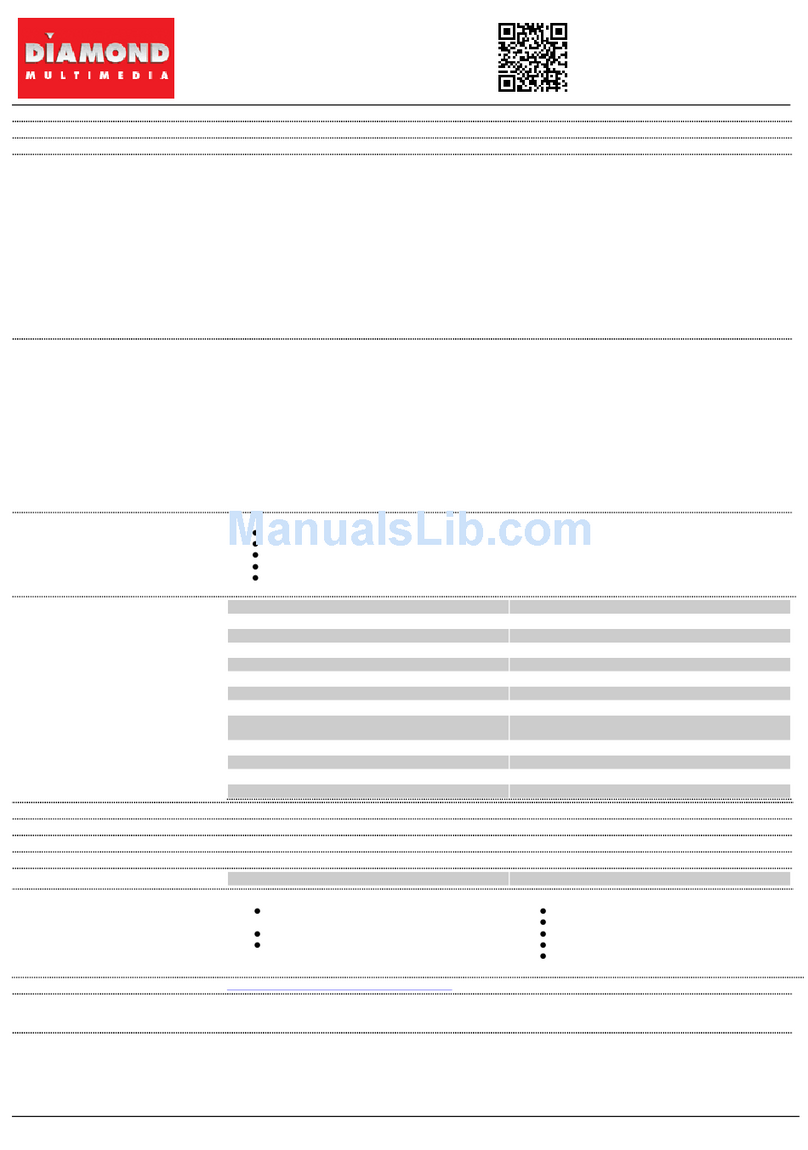
Diamond Multimedia
Diamond Multimedia XtremeTV PVR 550 Specification sheet

Pickering
Pickering PXI 40-923 user manual

Joranalogue
Joranalogue DELAY 1 quick start guide

National Instruments
National Instruments SC-207 Series user manual

SeaLevel
SeaLevel ACB-ULTRA.LPCI user manual
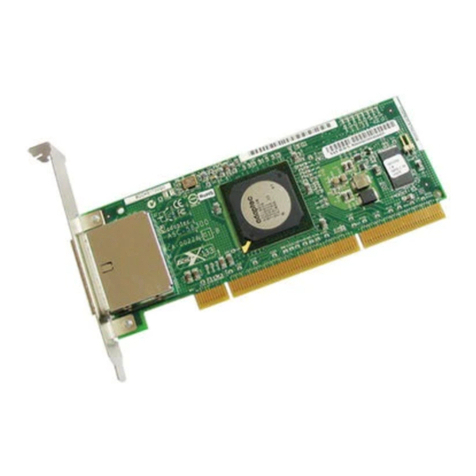
Adaptec
Adaptec SCSI 58300 Installation and user guide

